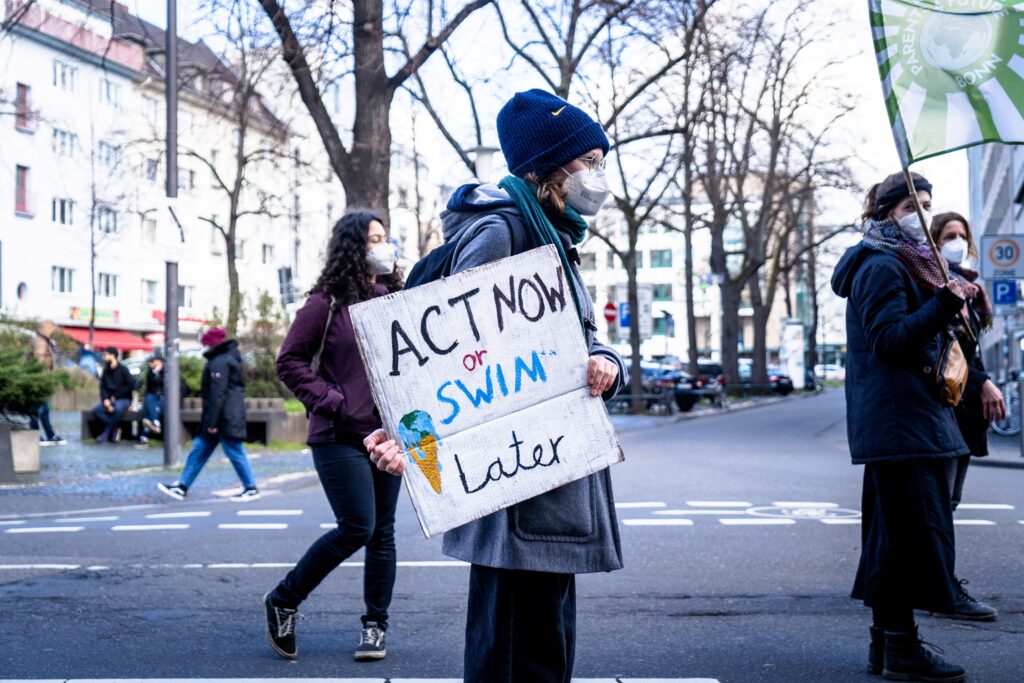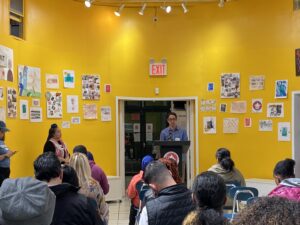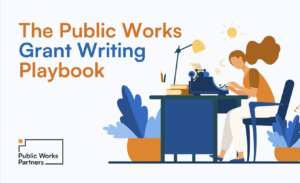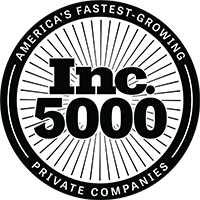
Amidst the backdrop of 2023’s heatwaves, deadly wildfires, and historic hurricanes, we’re confronted with an undeniable truth: climate change is an issue we can no longer afford to overlook. As urban planners, it’s imperative that we confront the pressing questions regarding the intersection of our work with an increasingly volatile planet.
The scale of the challenges we face may prompt one to think of solutions that revolve around large-scale, traditional infrastructure projects. Perhaps New York’s planned sea wall comes to mind? Or a proposal to increase our city’s tree canopy to 30% coverage? Resilience efforts, however can be effective at all levels, and often emerge from grassroots initiatives rather than high-profile, top-down endeavors.
Take, for instance, New York City’s recently unveiled strategic climate plan, PlaNYC, which advocates for state and federal funding to support Resilience Hubs, existing community centers protected from climate-induced hazards to keep residents safe “before, during, and after emergencies”. This approach builds on established community structures, supporting local organizations to expand their reach and impact, ensuring that resilience efforts are deeply rooted in the fabric of the neighborhoods they serve.
Resiliency & Social Cohesion
The Center for Climate and Energy Solutions defines climate resilience, specifically, as “the ability to anticipate, prepare for, and respond to hazardous events, trends, or disturbances related to climate.” The City Resilience Framework, developed by Arup with support from the Rockefeller Foundation back in 2014, includes traditional infrastructure and environmental planning as only one of four distinct dimensions of a resilient city, demonstrating that the utility of physical resilience infrastructure will be limited if there is no infrastructure protecting and strengthening a community’s social cohesion as well.
Social cohesion is a necessary ingredient for any resilient community. The OECD defines a cohesive society as one which “works towards the well-being of all its members, fights exclusion and marginalization, creates a sense of belonging, promotes trust, and offers its members the opportunity of upward social mobility.” Without the willingness and ability for people to share space, connect each other to resources, and look after each others’ collective welfare, we leave each other vulnerable.
The Resilience Hubs referenced in PlaNYC are designed to strengthen communities’ social cohesion. These spaces not only save individual lives by providing physical shelter or backup energy generation, they also preserve entire community networks. The hubs are, all at once, a base for communications, for information sharing, for resource distribution, for liaising with public officials — the list goes on. Resilience Hubs exist to enable communities to bounce back after the moment of acute danger has passed and to better respond to future threats. In times of calm, the spaces remain community anchors, providing invaluable social services day in and day out.
The social infrastructure undergirding that physical infrastructure can create a virtuous cycle of mutual investment, just ask the residents of Red Hook. Back in 2011, The Red Hook Initiative built a mesh network initially meant to address neighborhood disparities in broadband access. The small but growing community experiment proved essential during Superstorm Sandy. When traditional wifi networks across the city failed, Red Hook residents used the mesh network to keep in contact with one another, coordinate with emergency responders, distribute food, medicine and other resources. The resounding success of the mesh network led to more nodes, more capacity, and ultimately, more faith in the power of social infrastructure.
Stories like Red Hook Wifi remind us that our work can prove resilient – in all senses of the word – when we center solutions born from the social infrastructure within the communities we serve.
The Bronx is Breathing: A Public Works Case Study
This mindset defined Public Works Partners’ approach to drafting the New York State Clean Transportation Prize grand prize-winning proposal: The Bronx is Breathing: Reimagining a Greater Hunts Point. The $10 million proposal, which details plans for a multi-use electric charging depot for freight transportation, emerged from years of equity and environmental justice advocacy work put in by the Hunts Point community in the South Bronx. The full proposal team included Volvo USA as the project lead, supported by Barretto Bay Strategies and Public Works Partners, and grounded in the community expertise of The POINT Community Development Corporation, Urban Health Plan, and Greater Hunts Point Economic Development Corporation.
Hunts Point is home to the nation’s largest wholesale food hub as well as a vibrant environmental justice community. Of Hunts Point’s 12,000+ residents, nearly 40% live in poverty, and all bear the brunt of the food distribution hub’s negative environmental impact. Hunts Point residents currently breathe in the combustion fuel output of nearly 15,000 truck trips entering and exiting Hunts Point each workday, resulting in some of the highest childhood asthma rates in all of New York State. Electrifying these fleets has offered the most direct approach to addressing local freight transportation emissions and the broader transition away from harmful combustion fuels and greenhouse gas emissions.
Charging depots for all-electric freight and transportation fleets are clear examples of how we can imagine new constructions of social cohesion within our local infrastructure. Due to the idling time required to charge an electric vehicle, people will naturally interact with and spend time in these spaces differently than in a simple gas station or parking lot. Opportunities for new commercial interactions with the community emerge.
The Bronx is Breathing proposal imagined this new infrastructure from an explicit environmental justice perspective. Beyond simply providing charging space for new trucks, the proposal considers potential, additional uses and answers questions such as:
- How will these projects bring local environmental benefits to Hunts Point and the South Bronx?
- Will this infrastructure also provide access to new job opportunities, increase economic mobility, and strengthen community resilience?
- Can these projects bring new financial resources to communities and keep new wealth circulating locally?
Our proposal team knew that answering these questions would require the genuine inclusion of Hunts Point residents. Thus, we integrated long-standing community-based organizations, such as The POINT Community Development Corporation and the Greater Hunts Point Economic Development Corporation, into the larger project team from the start. Community engagement events like visioning sessions, general education workshops, and Ride & Drives with EVs have empowered and will continue to create space for Hunts Point and Bronx residents to co-design the publicly accessible multi-use charging hub to their benefit.
The proposed hub, simply put, will make Hunts Point a far more resilient community than before. Healthier lungs, new community space, access to more jobs, and space for further human connections. All of these outcomes, these new manifestations of social cohesion, are the elegant outgrowths of that existing work. We, as planners, have the privilege of being conveners, bringing new partners together and expanding visions of what is possible.
Strengthening Communities, Strengthening Resilience
So, how do we embed and expand upon social infrastructure in service of resilience-building plans? How do we ensure that processes and outcomes like the Bronx is Breathing proposal become the norm for resilience-building rather than the exception?
For one, identifying key project partners and opportunities for cross-sector collaboration should happen at the onset of any project, long before anything is drafted. Understanding the expertise and resources each partner brings is vital for developing plans grounded in local knowledge and creativity.
Secondly, planners, regardless of their specialization, should incorporate a holistic view of resilience—including its social, economic, and physical aspects—into their work. Not only because the quality of the ideas we generate from partners will be better, but because we can more clearly articulate the value of our work to a wider variety of audiences. In recognizing the importance of holistic community resistance, we can meet more people where they are, and translate their bold ideas into practice.
Community-centered planning goes beyond conventional top-down approaches to better meet the unique needs of specific neighborhoods. Armed with holistic resilience thinking, planners may better collaborate with communities to determine what is possible. As we’ve seen, achieving this sense of possibility in places like Red Hook or Hunts Point requires collective effort, much like addressing climate change itself. Centering community expertise is hardly an abdication of the planning profession’s agency; in fact, it is simply recognition that successful, resilient plans for the built environment rest upon sturdy, resilient social infrastructure. Without it, our work is meaningless.





 Public Works Partners is a WBE/DBE-certified urban planning and consulting firm. Our expertise lies in creating innovative, equitable, and sustainable solutions to complex problems.
Public Works Partners is a WBE/DBE-certified urban planning and consulting firm. Our expertise lies in creating innovative, equitable, and sustainable solutions to complex problems.